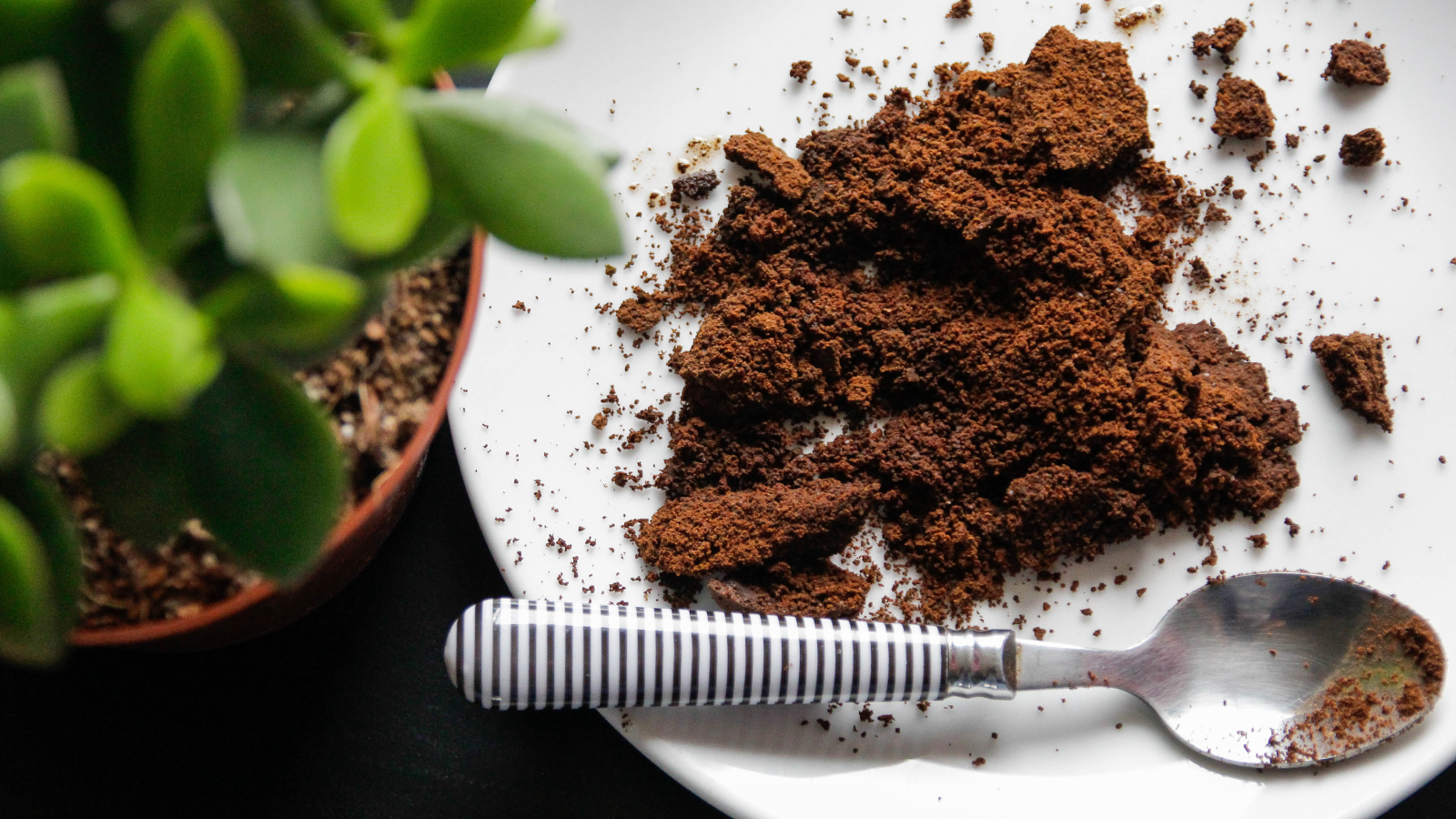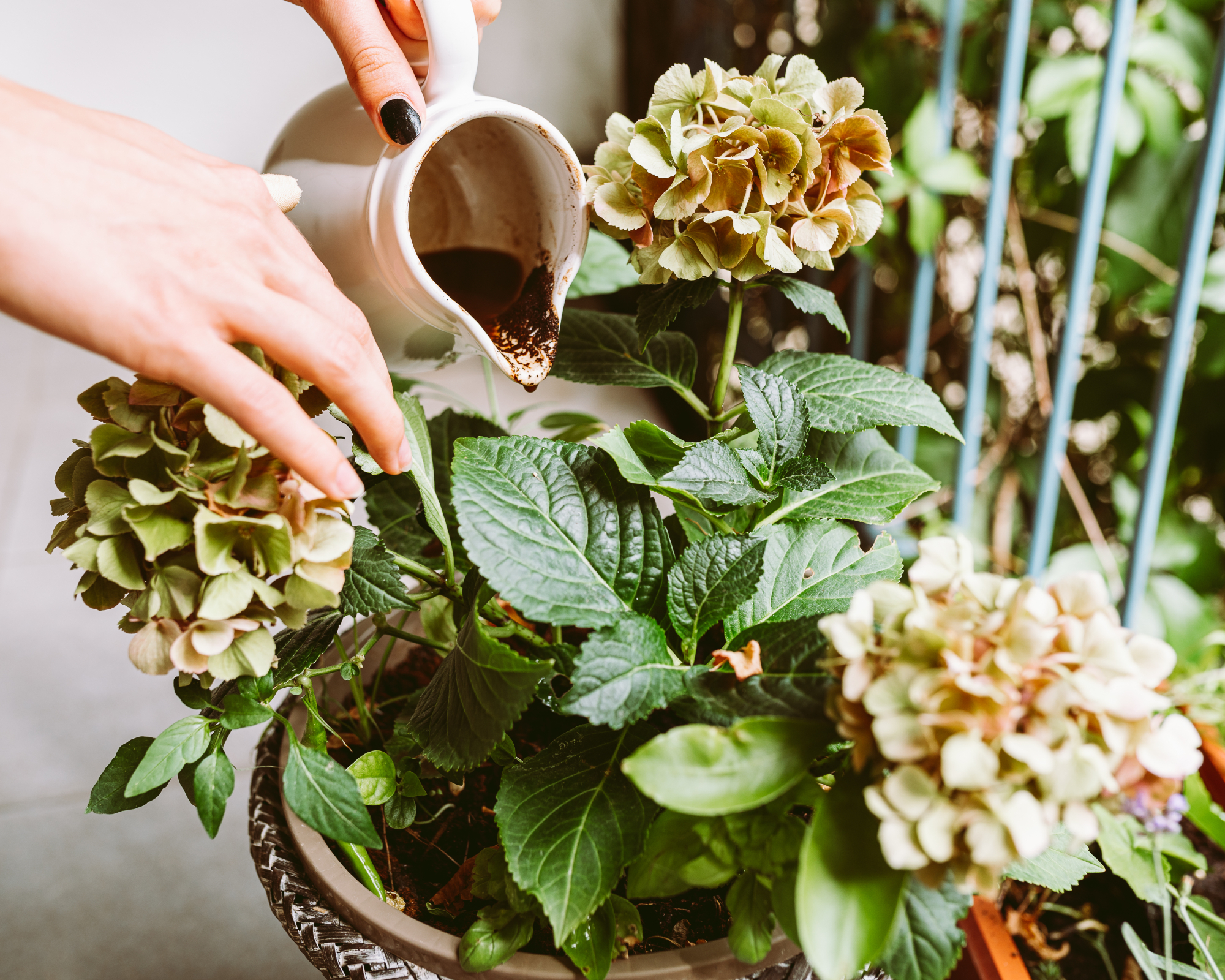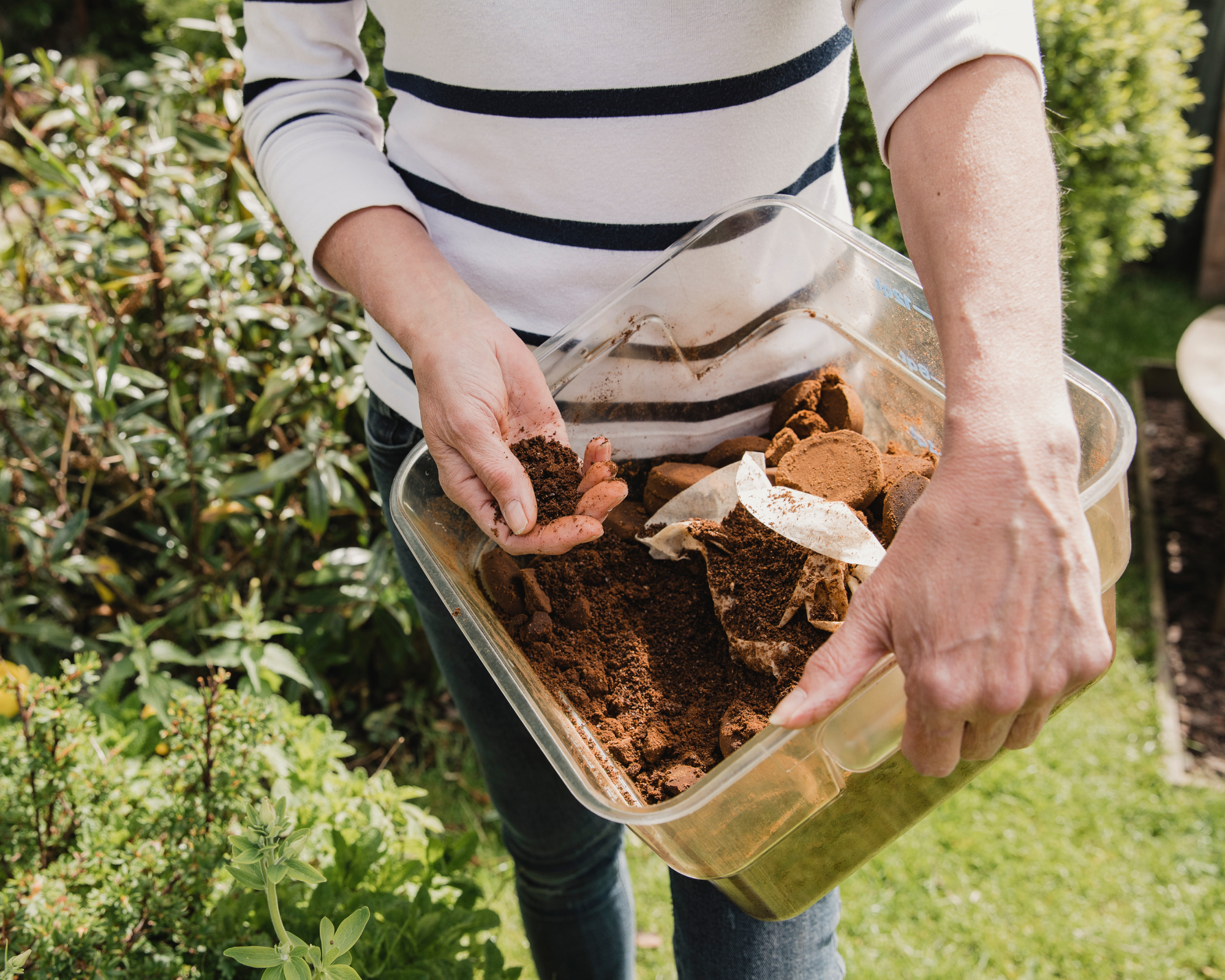This Unlikely Kitchen Scrap Repels Slugs & Fertilizes Soil – Toss it into Your Garden Instead of the Trash
You probably throw away this one item that can repel pests and improve soil every morning. Here's why you should toss it into your garden instead of the trash.


If slugs and snails are plaguing your plants, the secret to saving your garden may already be in your kitchen. There's a common food waste item that not only repels unwanted pests, but if used properly, can also improve soil and give compost a boost: used coffee grounds.
The spent coffee grounds you probably dump into the trash every morning have unique properties that can help your plants. And in fact, there are many ways to use coffee grounds in the garden, including to manage pests, enrich or amend the soil, and fertilize plants.
If you’re a daily java drinker, here’s how you can put those spent grounds to work to stop slugs, snails, and so much more. Plus, I'll share some must-know tips to help you avoid potential problems from using coffee grounds the wrong way.
Can Coffee Grounds Repel Slugs & Snails?
One of the most effective uses for coffee grounds in the garden is as a deterrent for soft-bodied pests, specifically slugs and snails. As mollusks rather than insects, these slimy pests behave differently and need to be managed differently from other unwanted insects.
Slugs and snails are omnivores. They eat a lot of material in the soil, including decaying plants and fungi. The species that cause issues for gardeners also include healthy, living plants in their diets.
Slugs eat plants at night, so you probably won’t catch them in the act. But you can identify slug and snail damage by the long, irregular holes left in leaves and flowers. These mollusks also leave mucus trails near plants, which are a dead giveaway.

How To Use Coffee To Get Rid of Slugs & Snails
If you’re seeing the suspicious signs of slug and snail damage in your garden, coffee grounds can help you create an effective deterrent. While you might have heard that coffee is toxic and will kill pests, this isn’t exactly true. Though you can use coffee grounds to repel wasps and mosquitoes.
Sign up for the Gardening Know How newsletter today and receive a free copy of our e-book "How to Grow Delicious Tomatoes".
Don’t rely on coffee grounds or coffee to kill slugs and snails. There are substances, like caffeine, in the grounds that are toxic to pests, but the concentration isn’t high enough.

In order to kill slugs and snails with coffee, you have to get the concentration right. Studies show that a 1% to 2% solution made from coffee grounds will kill some common garden pests. A 2% solution of just caffeine alone will also kill slugs and snails.
To use coffee grounds to kill slugs and snails, soak used coffee grounds in water to create a caffeine-packed solution. Then drench the soil in your garden with this diluted coffee solution for plants.
There is another way to use coffee grounds to repel garden pests as well. Though caffeine can kill unwanted mollusks, you can use coffee grounds as a physical barrier to repel slugs and snails.
With their soft bodies, slugs and snails don’t like moving over gritty surfaces. Create a ring of coffee grounds around vulnerable plants to discourage slithering pests from bothering them. When a slug touches the coffee grounds, it will feel discomfort and turn around. This is a simple as well as safe and natural way to control snails and slugs in the garden.
Though this strategy is effective, it’s not necessarily practical to ring all the plants in a large garden with coffee grounds. Use this method as one deterrent in a larger arsenal of pest management. Protect select plants that are already exhibiting damage to make the most of your coffee grounds.

More Ways To Use Coffee Grounds
When placed strategically, coffee grounds will keep slugs and snails from eating plants. But this isn’t the only use for grounds in the garden. Here are two other great ways you can use spent grounds to help you grow a better garden.
1. Improve Soil With Spent Grounds
Coffee grounds are rich in nitrogen. They also contain other important nutrients, like potassium, phosphorus, calcium, copper, and magnesium in smaller amounts. There are many garden plants that like coffee grounds and will benefit from a jolt of Joe.
Coffee grounds, along with other organic matter, can enrich your soil and provide plants with some additional nutrients. Even more so, grounds improve the soil by feeding microbes. A healthy microbial ecosystem creates a better soil structure and improves drainage.
If you're not a coffee drinker, then worm castings, which you can get on Amazon, are a fantastic way to improve soil structure and give plants a boost.
To use coffee grounds as a fertilizer, spread a thin layer on the top of the soil around plants and water thoroughly. To amend the soil, mix the grounds into the soil. Create a layer of grounds about a half inch (1.3 cm) deep and mix it into the soil down to a depth of about 4 inches (10 cm).

2. Toss Coffee Into Your Compost Pile
Another way to make use of the nutrients in spent coffee grounds is to add them to your compost at home.
In composting terms, coffee grounds are in the "green" category. This means they are rich in nitrogen. Keep that in mind to ensure you maintain a good balance between green and brown compost ingredients, which should be about a ratio of 1:2 or 1:3.
You can also add the coffee filters right to the compost bin, but make sure the grounds have cooled down. If they’re too hot, they can kill some of the beneficial microbes in your compost.
Make composting easy and mess-free with a compact tumbler from Amazon.
Precautions When Using Coffee Grounds
While coffee grounds can be useful in the garden, they can also cause problems if you don’t use them the right way. The most common mistake coffee-drinking gardeners make is being overzealous with the application of used grounds.

Like any type of kitchen waste that hasn’t yet decomposed, you need to use restraint when adding coffee grounds to the soil. Too much fertilizer can actually ruin garden beds. The addition of excessive coffee grounds can change the soil too much and even kill plants.
Likewise, for the best compost, coffee grounds shouldn’t make up more than 20% of the total volume.
Another mistake you can make is to assume that coffee grounds will turn your soil acidic. Many gardeners tout used coffee grounds as the secret to bright blue hydrangeas, but there's not much evidence to back up that claim.
Used coffee grounds are only slightly acidic. They can give your soil a temporary boost of acidity, but don’t rely on grounds for a big pH change or as a long-term solution.
Many of us produce a lot of coffee grounds with our daily cup of java, so we're looking for new ways to reuse them instead of tossing them in the trash. You might not be able to use all of your spent grounds in the garden, but strategic, careful use can bring important benefits to your plants and help you reduce food waste in your garden.

Mary Ellen Ellis has been gardening for over 20 years. With degrees in Chemistry and Biology, Mary Ellen's specialties are flowers, native plants, and herbs.